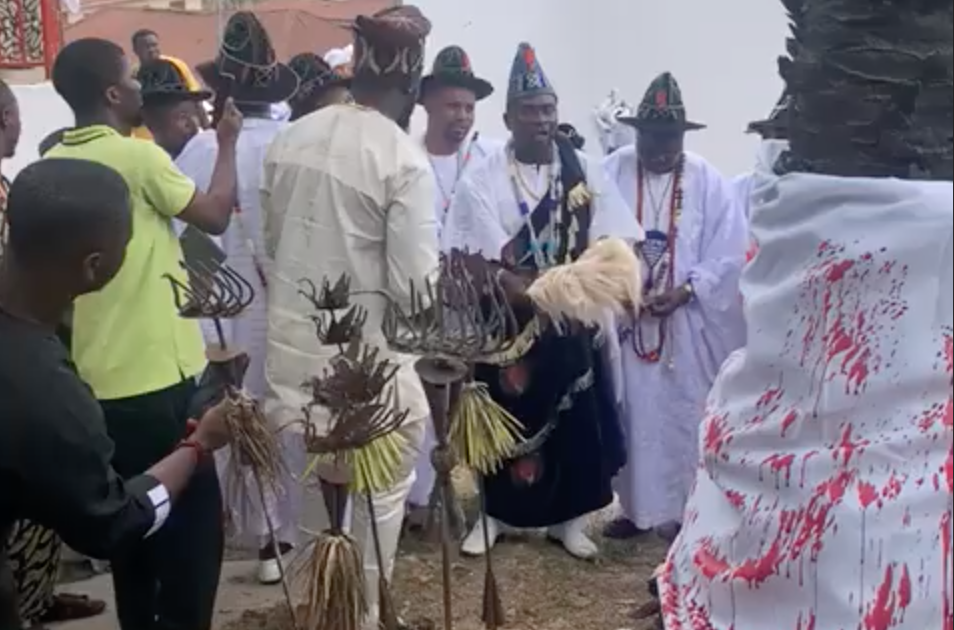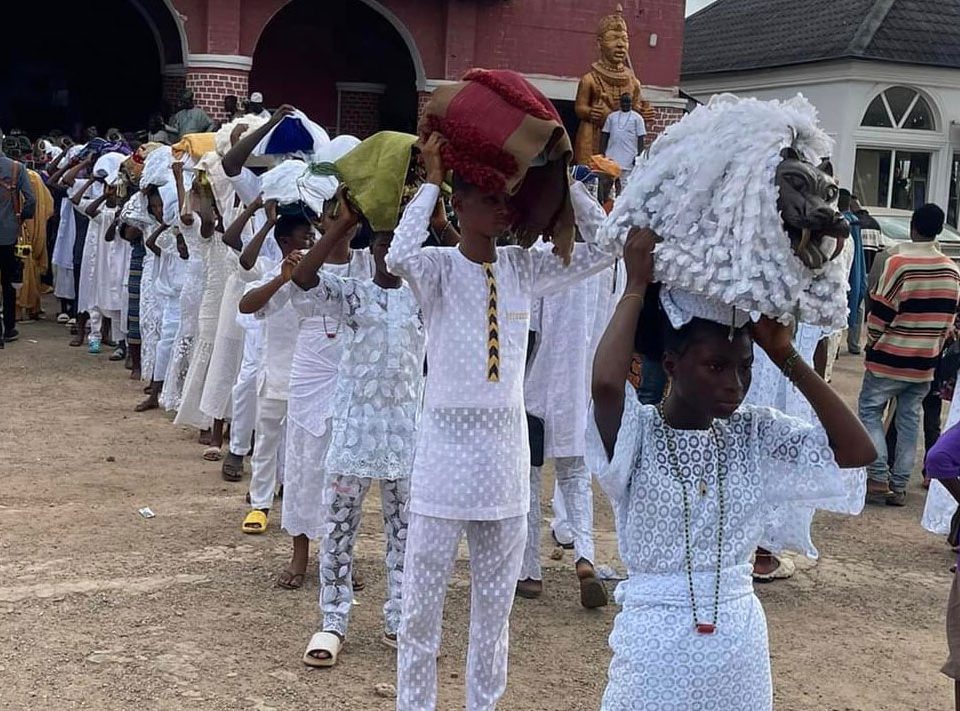
Araba en el Oke Itase 2022 en Ile Ife
The Oke Itase and the Cuban Letter of the Year are two events that followers of Ifá look forward to each year, although they differ significantly in their execution, scope, and relevance. Both events aim to guide Ifá practitioners throughout the year, but they do so in very different ways, reflecting the traditions and cultural contexts of their respective regions.
Oke Itase: A Global Event
Oke Itase is a divination ceremony held annually in Ile Ife, Nigeria, considered the cradle of Yoruba civilization. This event is highly significant as it uses the first Ifá that existed in history. This annual festival is deeply rooted in Yoruba culture and traditions and features the participation of the highest representatives of Ifá, including the Ooni of Ile Ife, who is the representative of all the kings of Nigeria, and the araba Agbaye, the chief of all the babalawo in the world. Hence its importance for those who follow the Ifá Traditional practice.
During Oke Itase, priests and Ifá practitioners from all over Nigeria and various parts of the world gather. The divination performed at this world Ifá festival adheres to the Yoruba calendar and marks the beginning of the harvest season, which is why it is not celebrated in December but in early June. Preparations for the festival begin well before the public event, ensuring that all ceremonial and ritual aspects are carried out with the utmost precision and reverence.
Oke Itase is an inclusive event that welcomes priests from all lineages of Nigeria and the world, promoting unity and respect within the Ifá community despite the differences in the practices of the different lineages. Most babalawo in Nigeria follow the Odu Ifá that emerges from this festival, demonstrating its importance and relevance on a global scale.
The Cuban Letter of the Year: A Local Event with Limited Scope
In contrast, the Cuban Letter of the Year is a divination ceremony held on December 31 by a group of babalawo in Cuba. This event was initiated by a babalawo who decided to conduct a divination on that specific date—the end of the year according to the Gregorian calendar—thus establishing an annual tradition for his house or temple, which is currently followed by those who practice Afro-Cuban Ifá (also known as Ifá Criollo).
Unlike Oke Itase, the Cuban Letter of the Year cannot be considered a worldwide divination. Its validity is limited to the community participating in the ceremony and does not have the same recognition or scope as the Odu Ifá from Oke Itase. While Oke Itase influences the practices and decisions of the Ifá community globally, the Cuban Letter of the Year is confined to its local context.
Importance of Representatives and Ceremonial Context
One of the most notable differences between the two events is the presence and participation of figures of great authority and knowledge in Oke Itase. The ceremony in Nigeria includes the participation of the Ooni of Ile Ife and the araba Agbaye, who have significant influence in the Yoruba community and the practice of Ifá worldwide. These figures provide a legitimacy and ceremonial weight that is not observed in the Cuban Letter of the Year.
Additionally, the ceremonial context of Oke Itase, aligned with the Yoruba calendar and centered on the harvest season, reflects a deep connection with nature and the agricultural cycle, fundamental aspects of Yoruba culture. On the other hand, the Cuban Letter of the Year, celebrated in December, focuses more on the specific needs and circumstances of the local community that conducts it.
Oke Itase will be held from May 26 to June 2 and will be followed live from Ile Awo and the available mobile apps. Don’t miss this unique opportunity to experience and participate in the activities of Oke Itase 2024.
Follow the event live and stay up to date with all the details and updates by visiting the official Oke Itase 2024 page and downloading our apps. We look forward to celebrating the rich cultural and spiritual heritage of Ifá with you!



